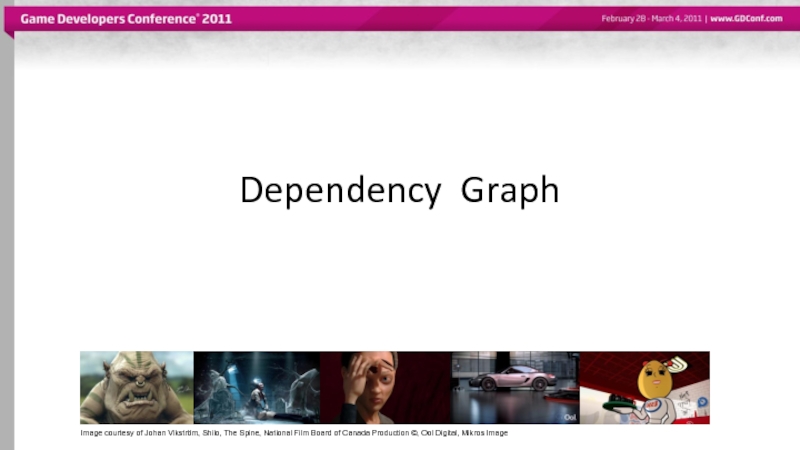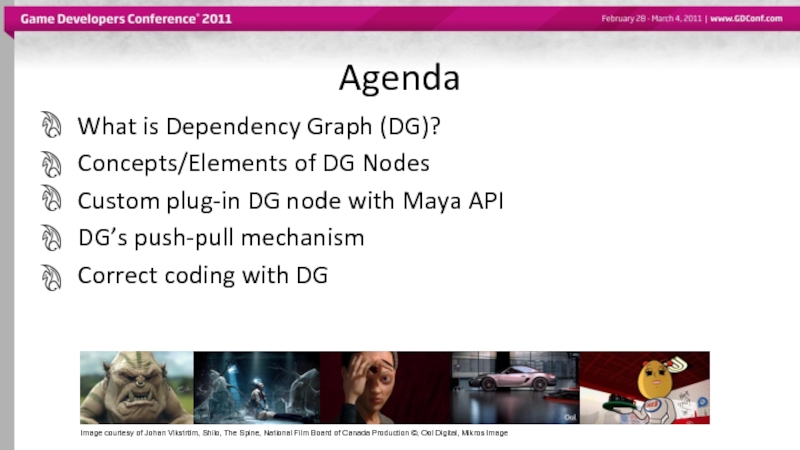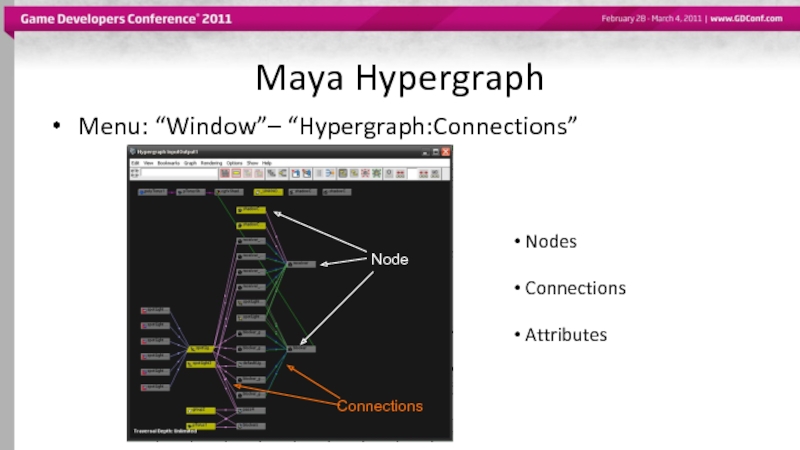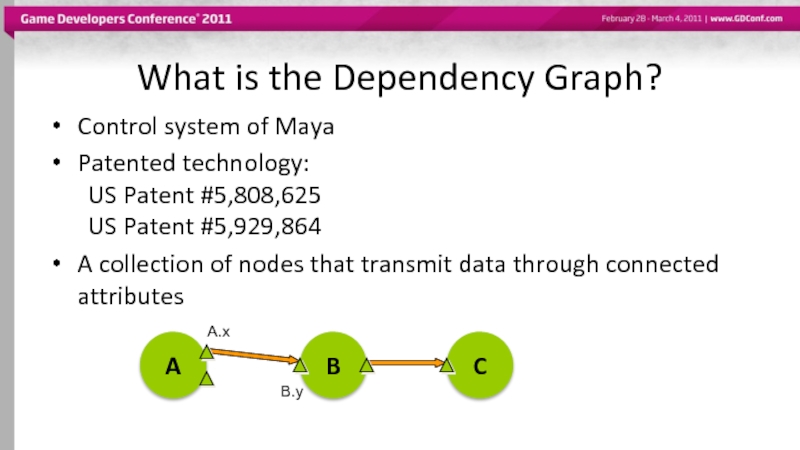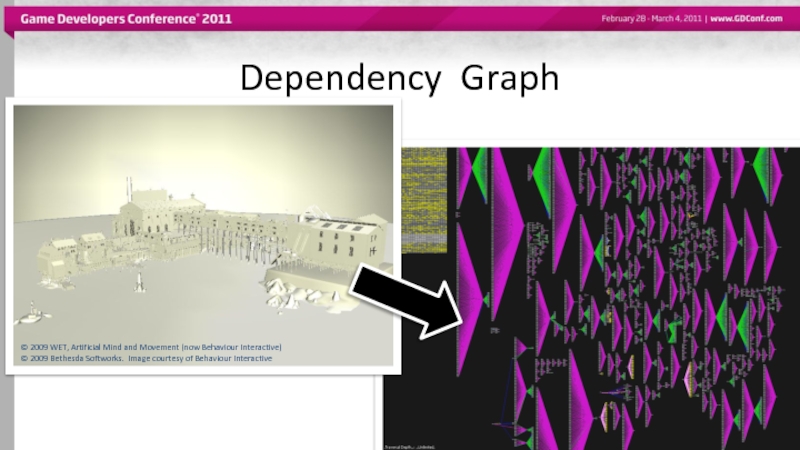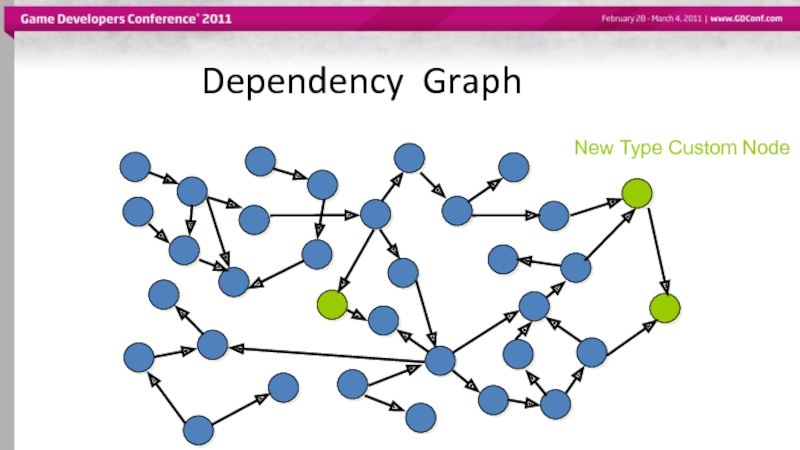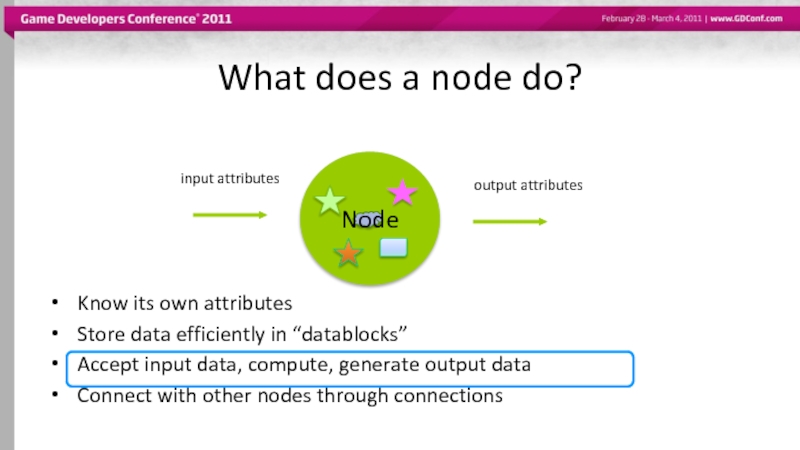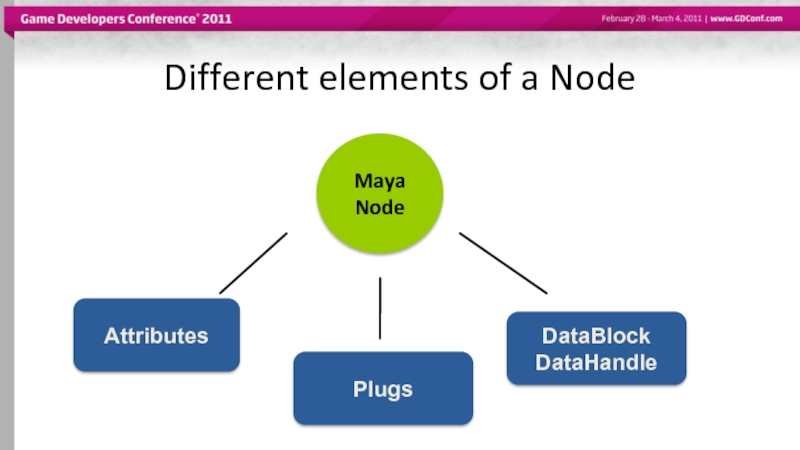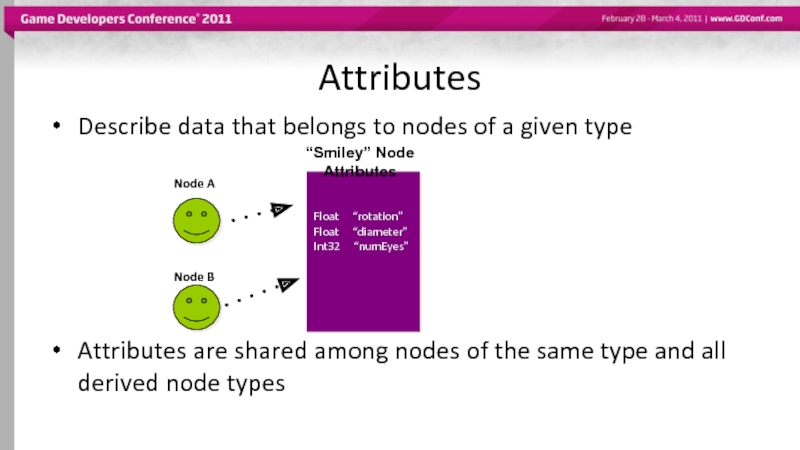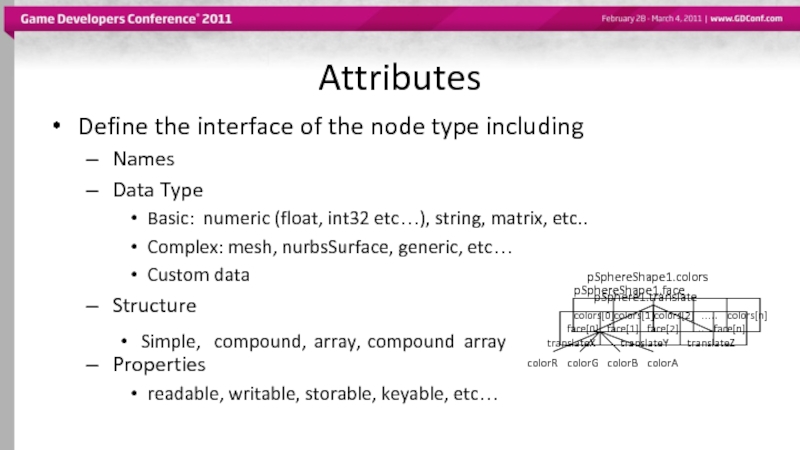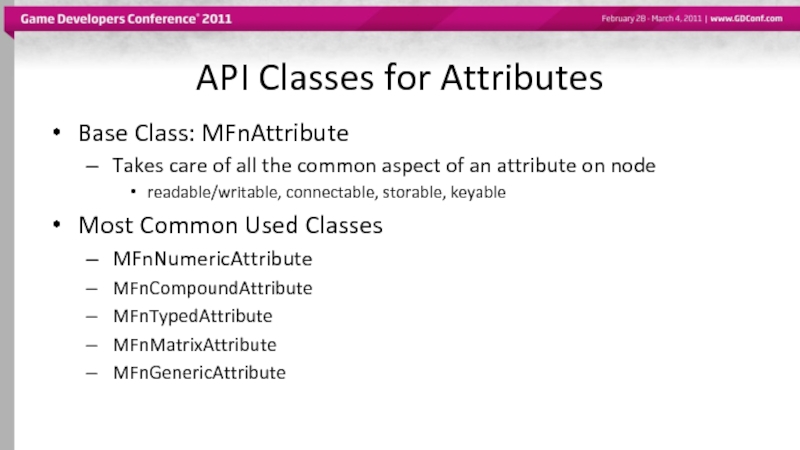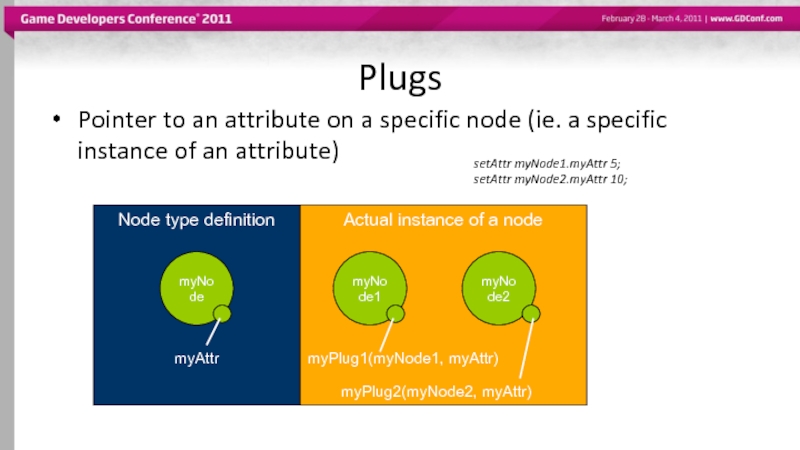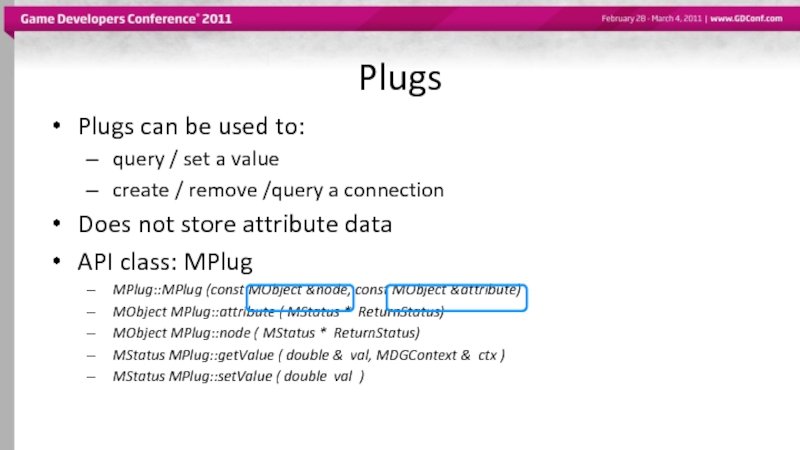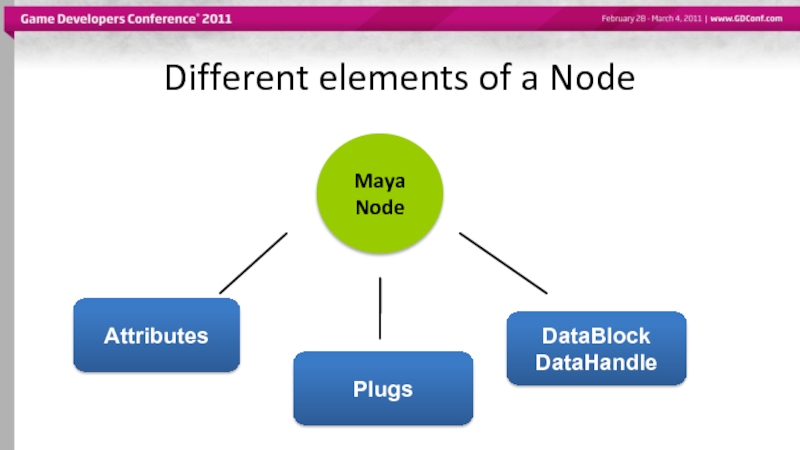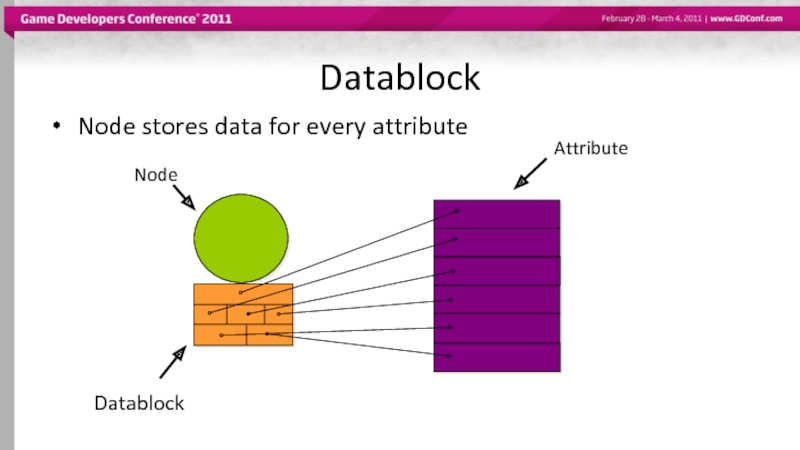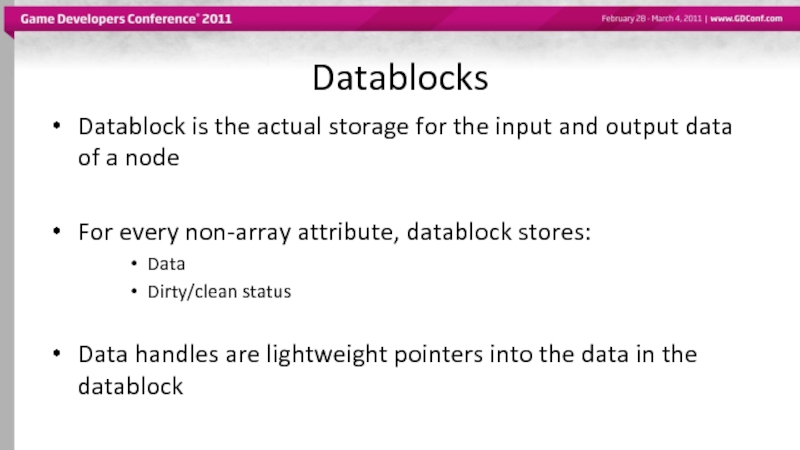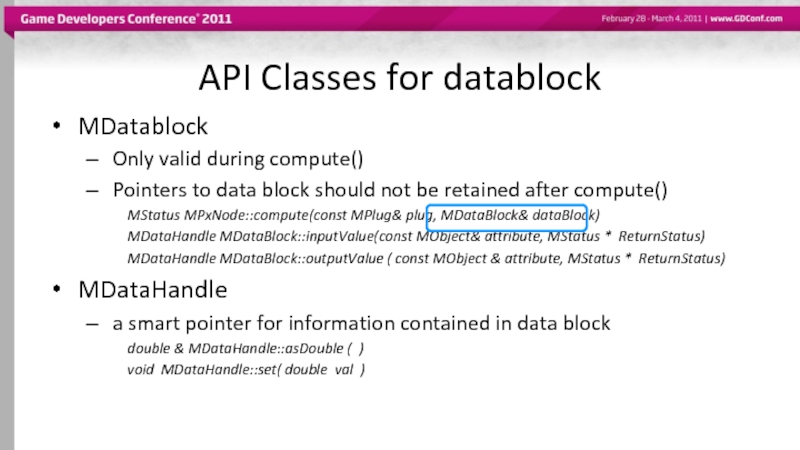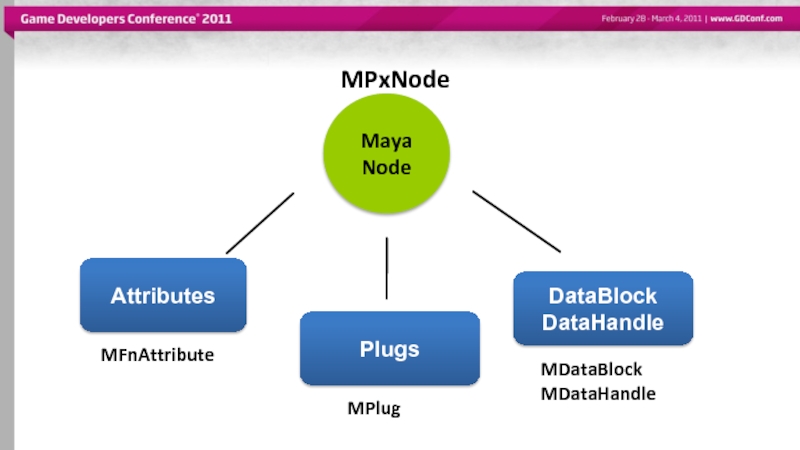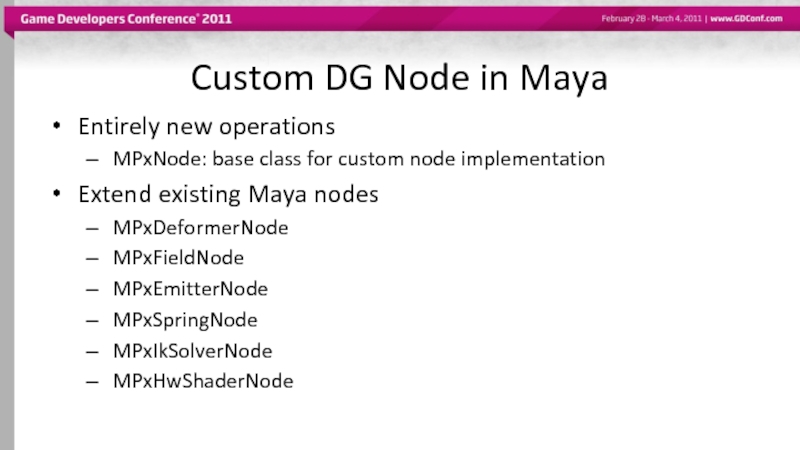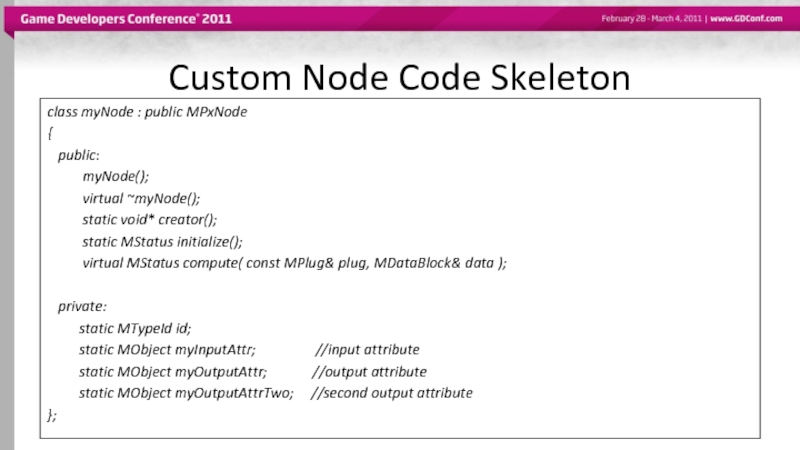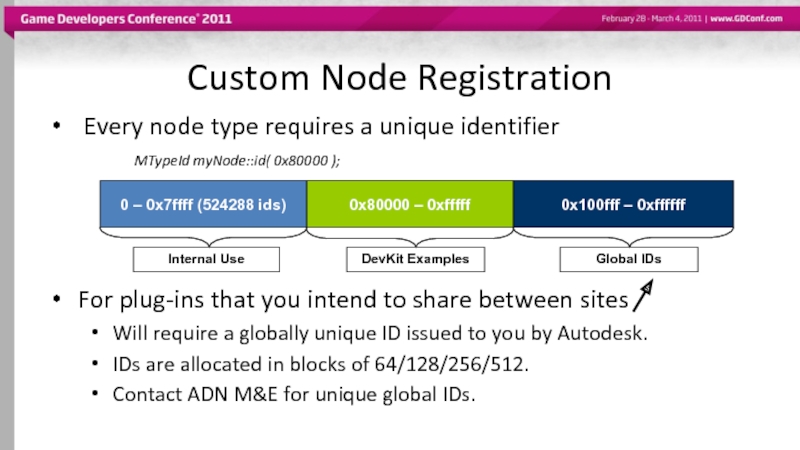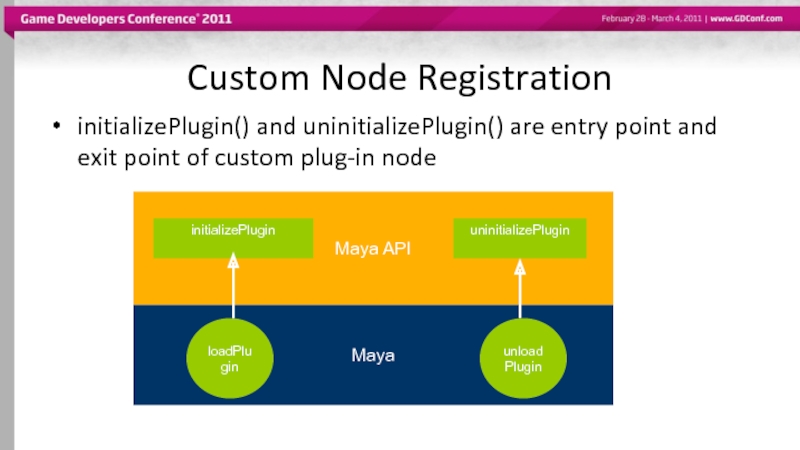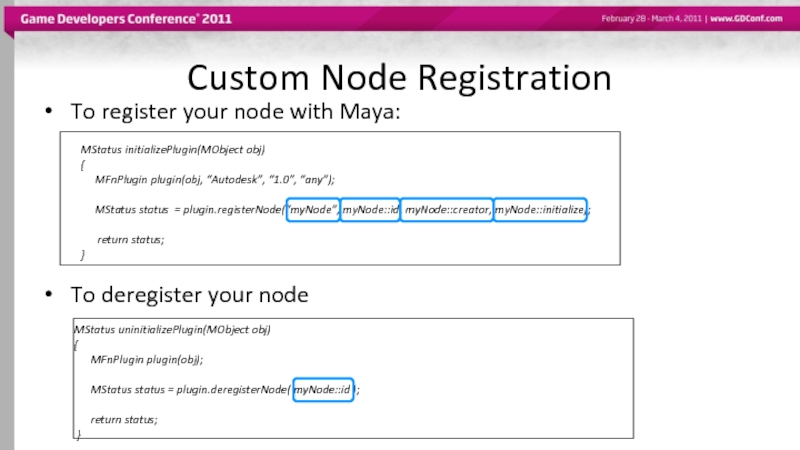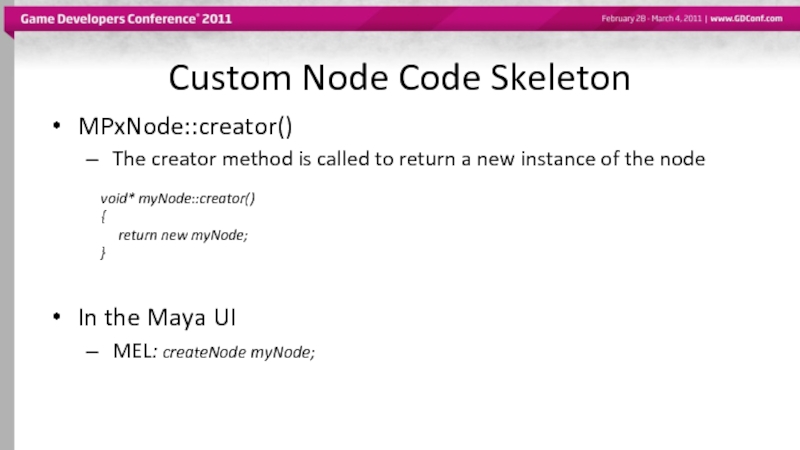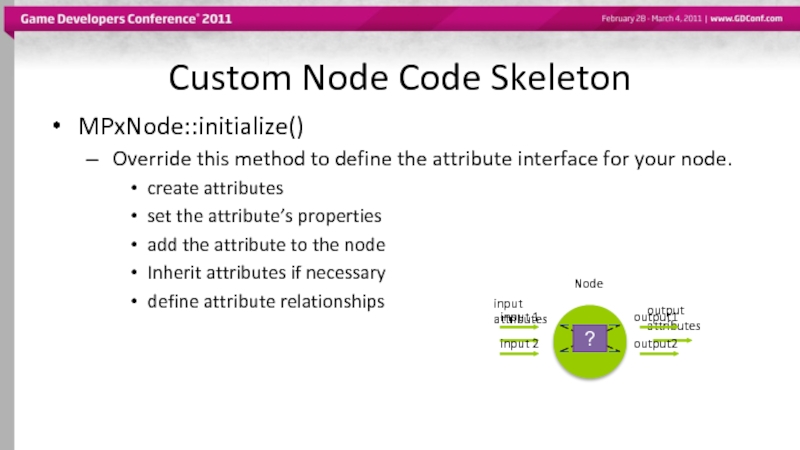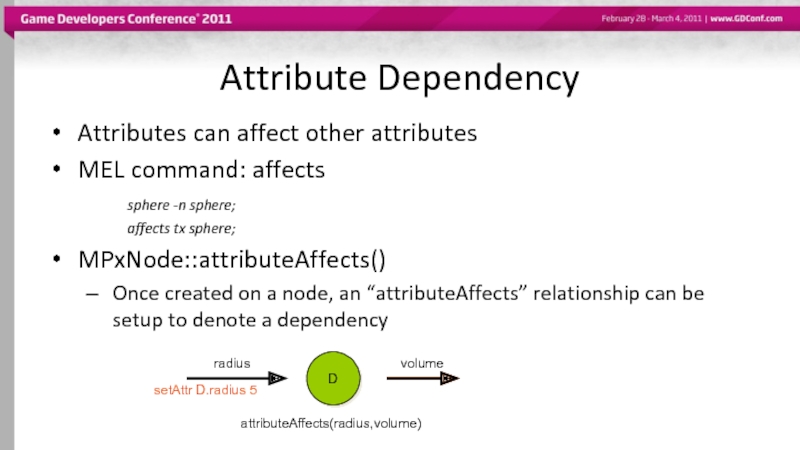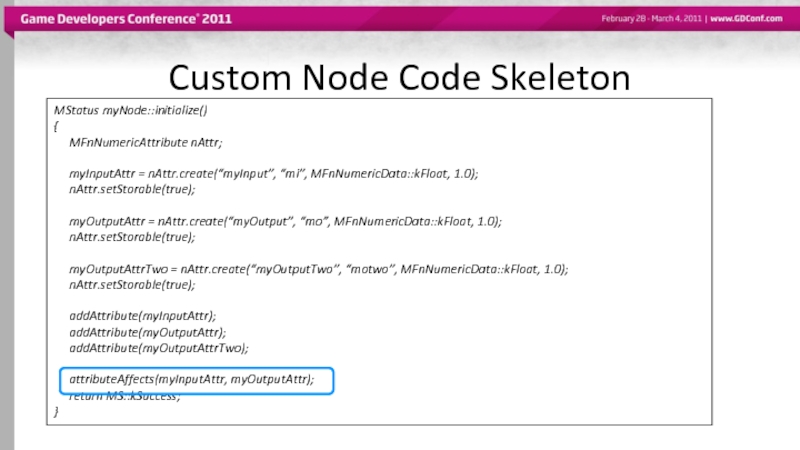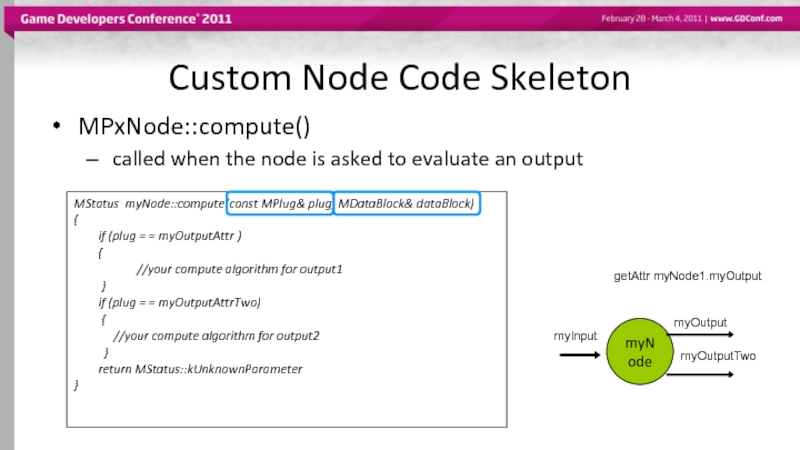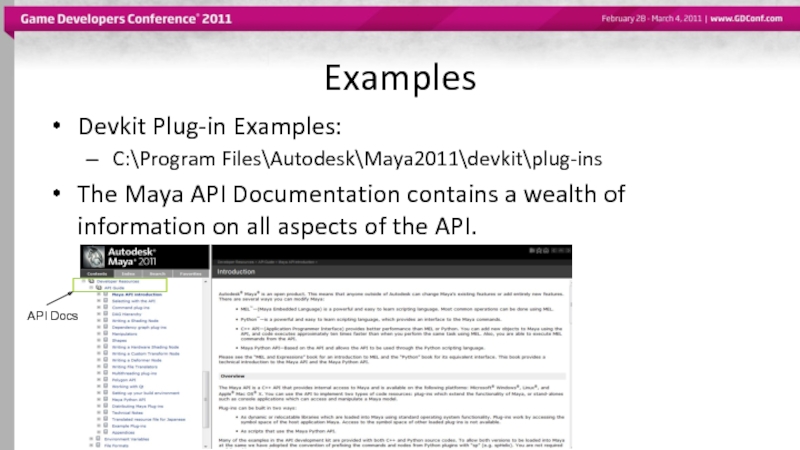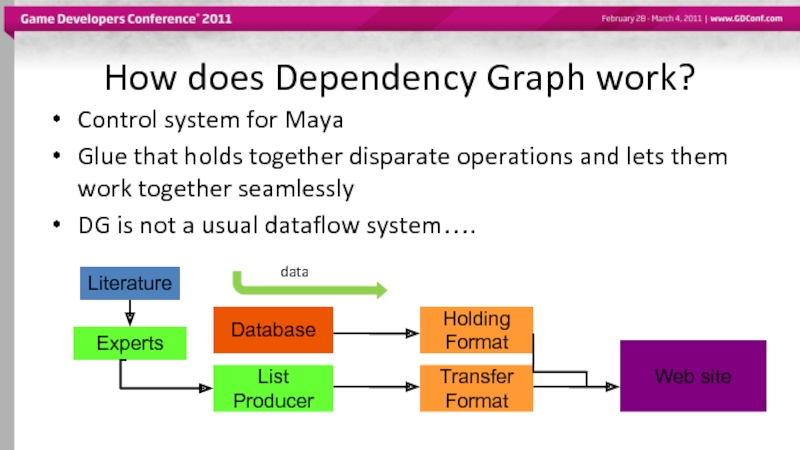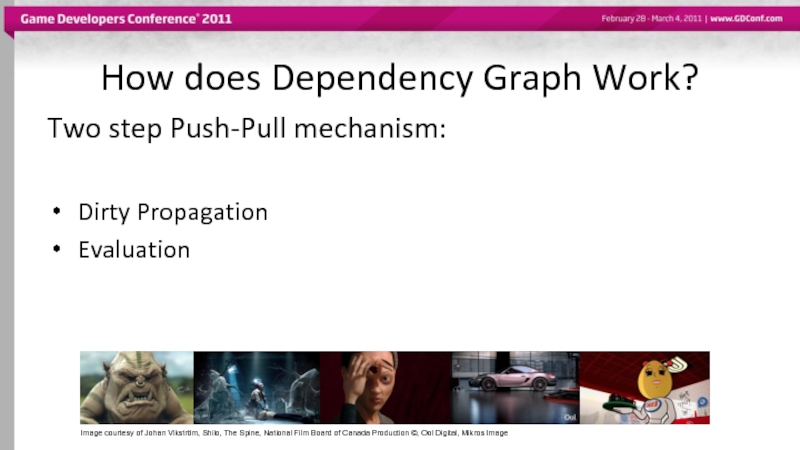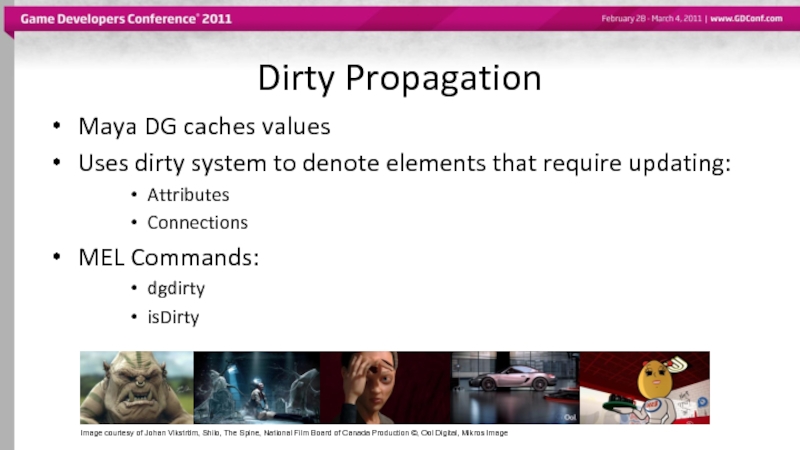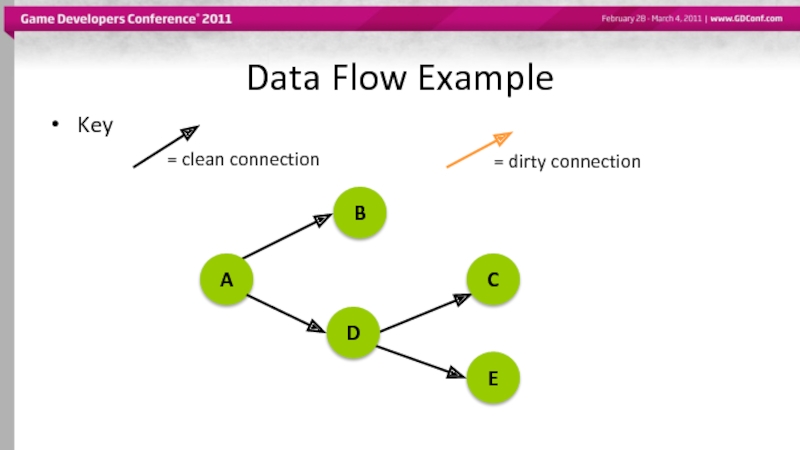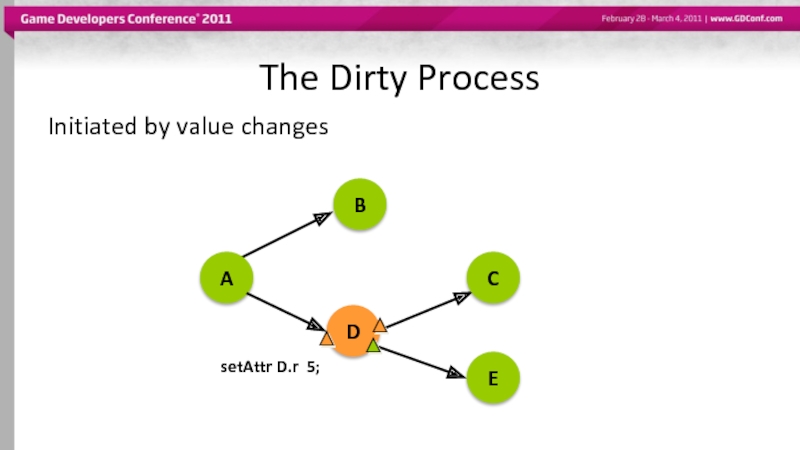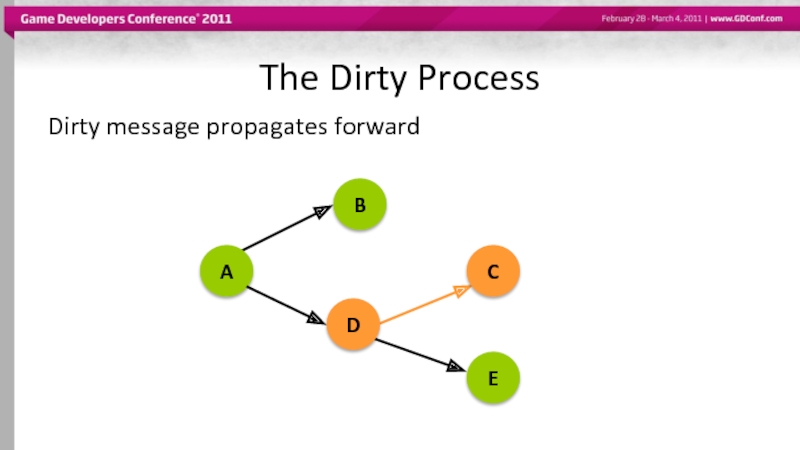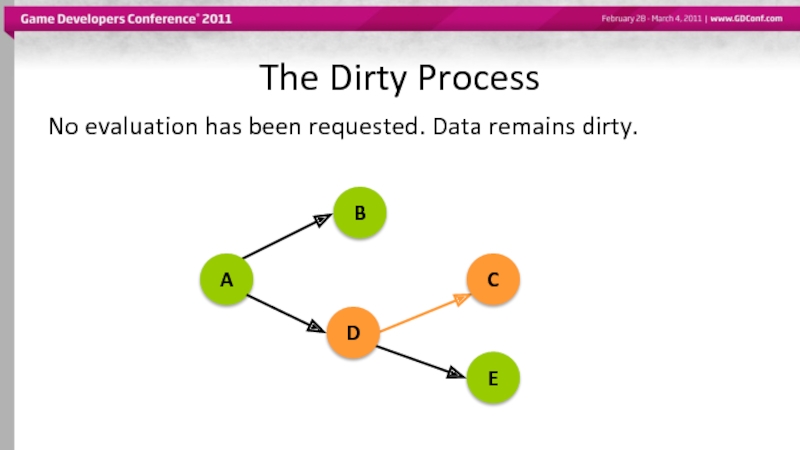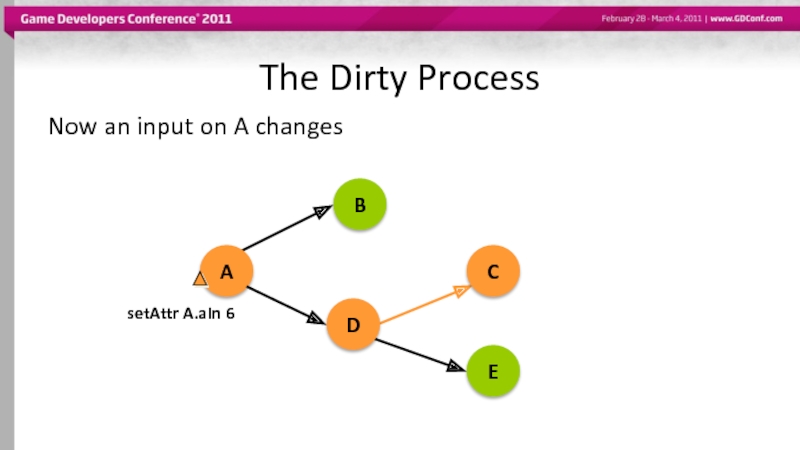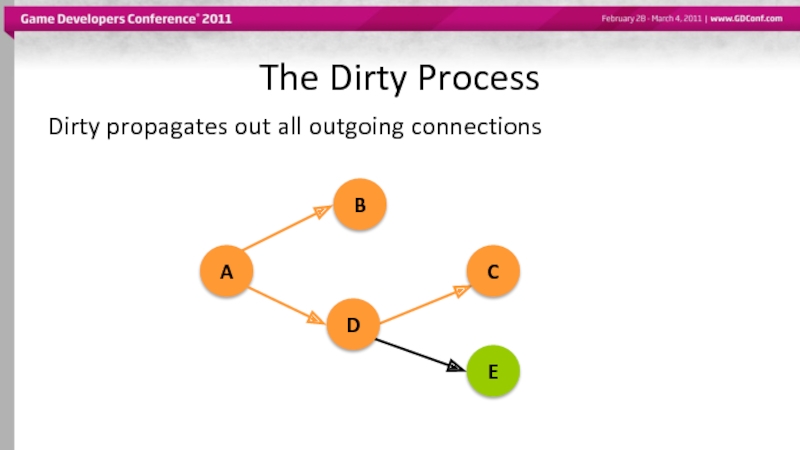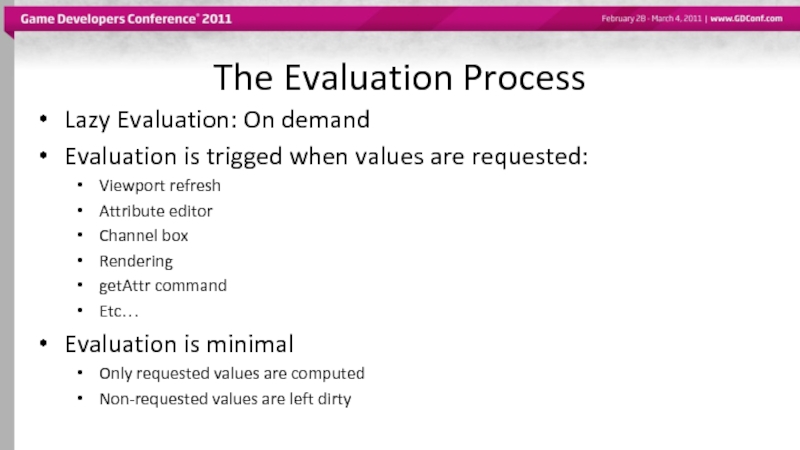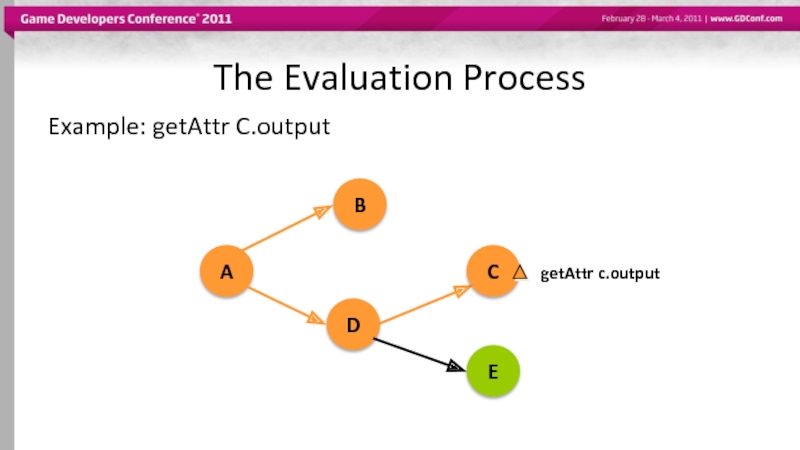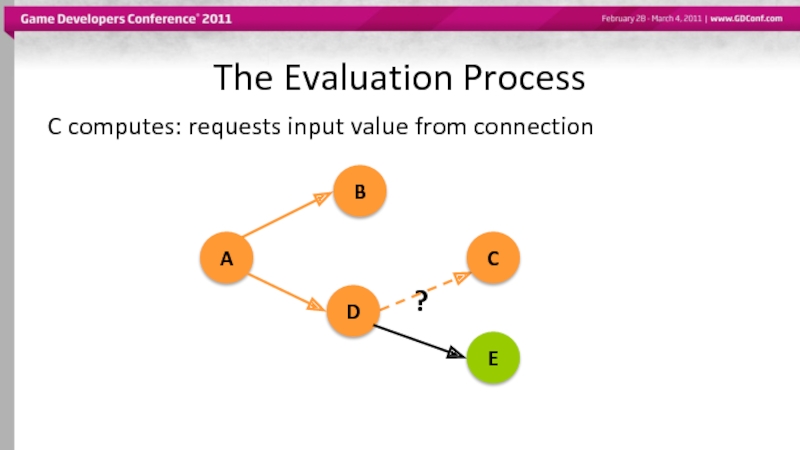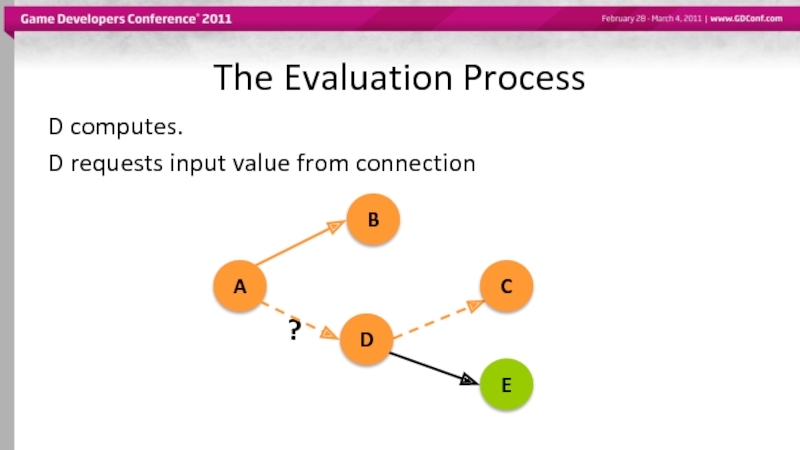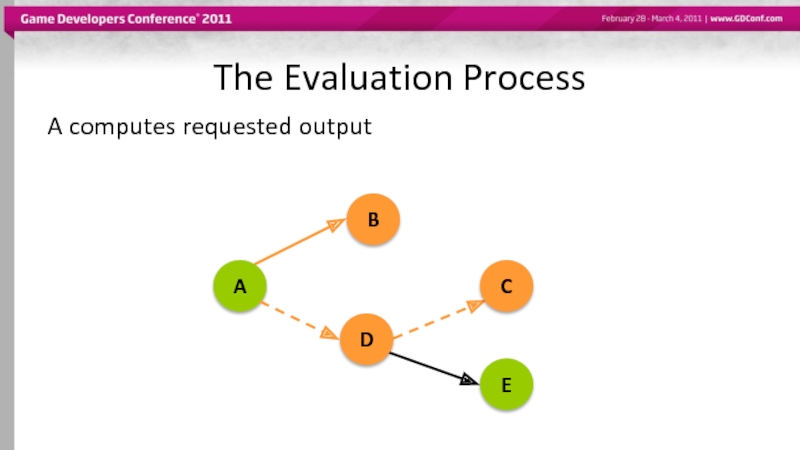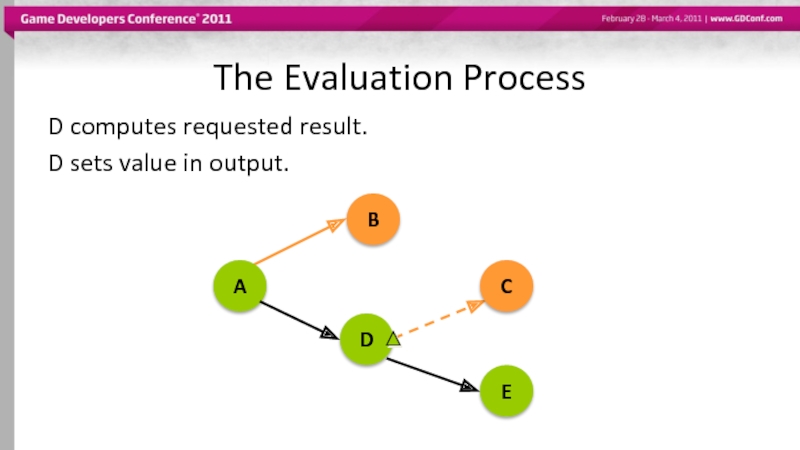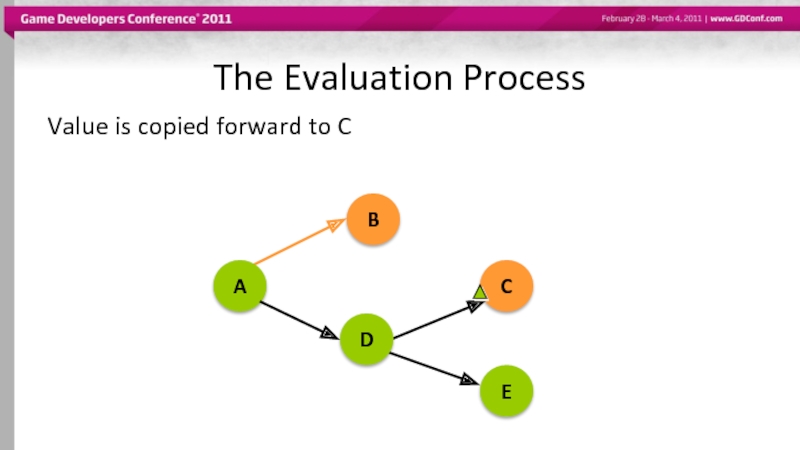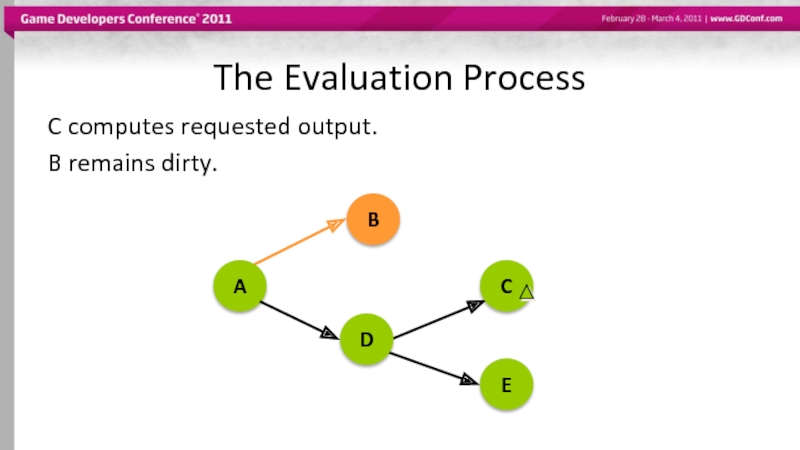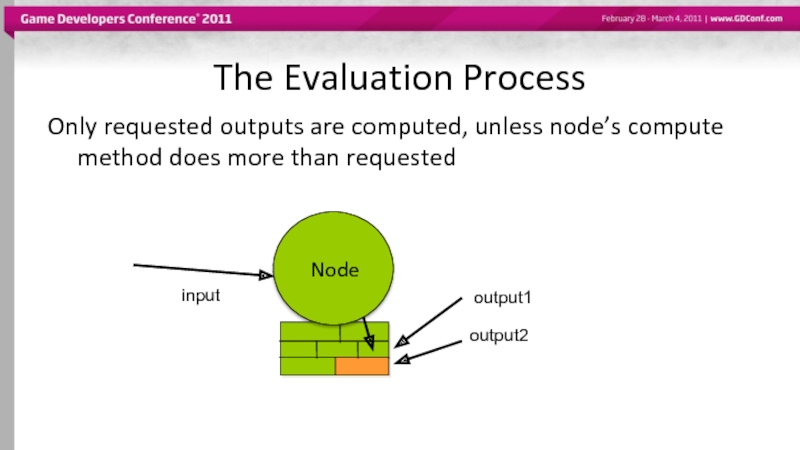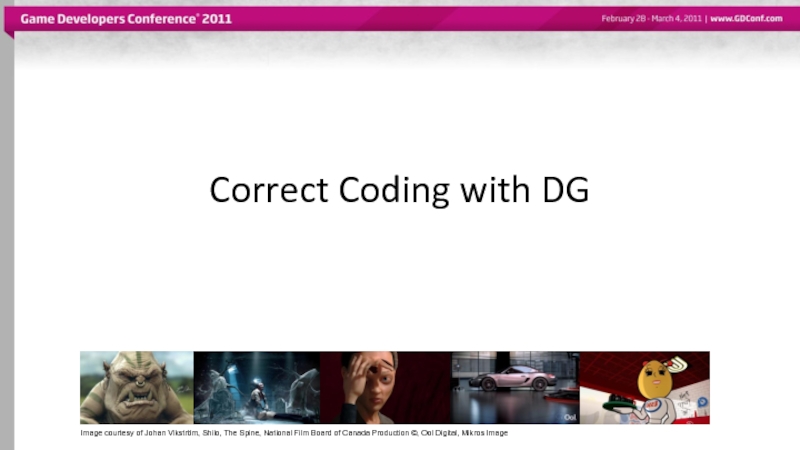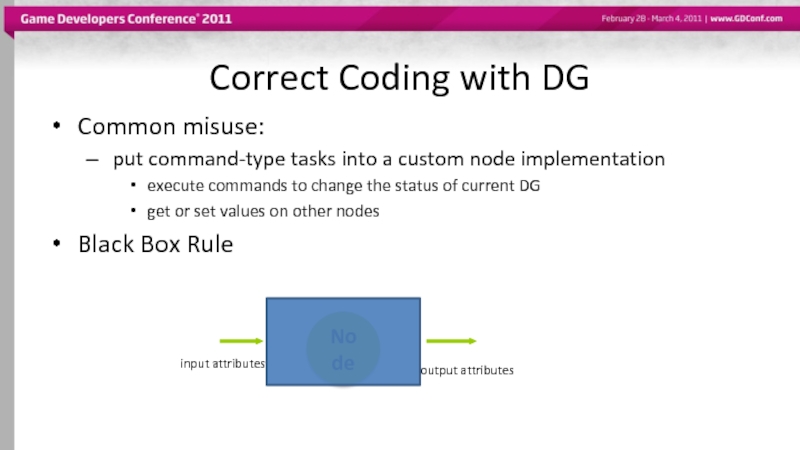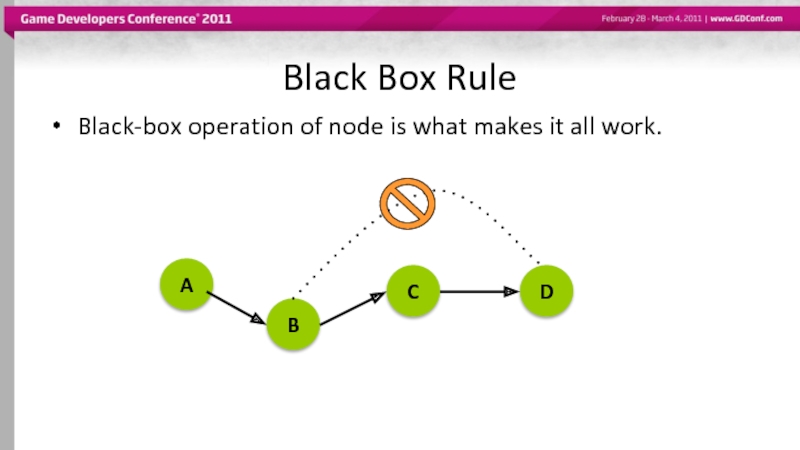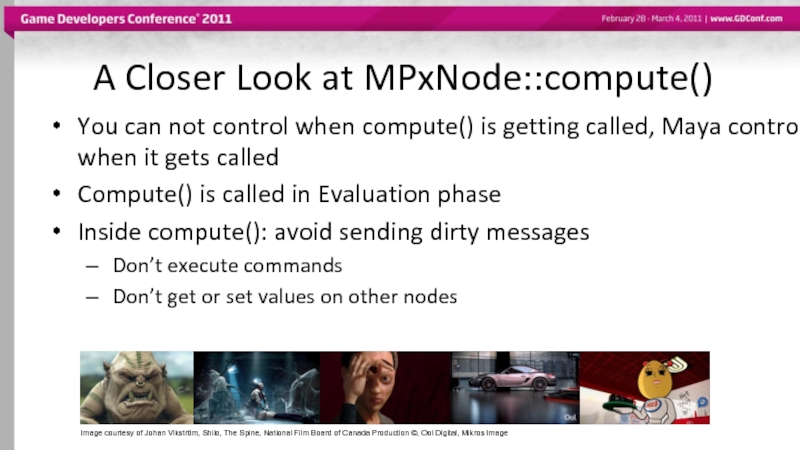- Главная
- Разное
- Дизайн
- Бизнес и предпринимательство
- Аналитика
- Образование
- Развлечения
- Красота и здоровье
- Финансы
- Государство
- Путешествия
- Спорт
- Недвижимость
- Армия
- Графика
- Культурология
- Еда и кулинария
- Лингвистика
- Английский язык
- Астрономия
- Алгебра
- Биология
- География
- Детские презентации
- Информатика
- История
- Литература
- Маркетинг
- Математика
- Медицина
- Менеджмент
- Музыка
- МХК
- Немецкий язык
- ОБЖ
- Обществознание
- Окружающий мир
- Педагогика
- Русский язык
- Технология
- Физика
- Философия
- Химия
- Шаблоны, картинки для презентаций
- Экология
- Экономика
- Юриспруденция
Introduction to Maya презентация
Содержание
- 1. Introduction to Maya
- 2. Biography
- 3. Dependency Graph
- 4. Agenda What is Dependency Graph (DG)?
- 5. Maya Hypergraph Menu: “Window”– “Hypergraph:Connections” Nodes Node Connections Attributes Connections
- 6. What is the Dependency Graph? Control system
- 7. Dependency Graph Everything in Maya 3D space
- 8. Dependency Graph © 2009 WET,
- 10. What does a node do? Know
- 11. Different elements of a Node Maya Node Attributes Plugs DataBlock DataHandle
- 12. Attributes Describe data that belongs to nodes
- 13. Attributes Define the interface of the node
- 14. API Classes for Attributes Base Class: MFnAttribute
- 15. Different elements of a Node Maya Node Attributes Plugs DataBlock DataHandle
- 16. Plugs Pointer to an attribute on a
- 17. Plugs Plugs can be used to: query
- 18. Different elements of a Node Maya Node Attributes Plugs DataBlock DataHandle
- 19. Datablock Node stores data for every
- 20. Datablocks Datablock is the actual storage for
- 21. API Classes for datablock MDatablock Only valid
- 22. Maya Node Attributes Plugs DataBlock DataHandle MPxNode MFnAttribute MPlug MDataBlock MDataHandle
- 23. Custom Node Plug-in Implementation
- 24. Custom DG Node in Maya Entirely new
- 25. Custom Node Code Skeleton class myNode :
- 26. Custom Node Registration Every node type
- 27. Custom Node Registration initializePlugin() and uninitializePlugin() are
- 28. Custom Node Registration To register your node
- 29. Custom Node Code Skeleton MPxNode::creator() The creator
- 30. Custom Node Code Skeleton MPxNode::initialize() Override this
- 31. Attribute Dependency Attributes can affect other attributes
- 32. Custom Node Code Skeleton MStatus myNode::initialize() {
- 33. Custom Node Code Skeleton MPxNode::compute() called when
- 34. Examples Devkit Plug-in Examples: C:\Program Files\Autodesk\Maya2011\devkit\plug-ins The
- 35. How does Dependency Graph work? Control system
- 36. How does Dependency Graph Work? Two step Push-Pull mechanism: Dirty Propagation Evaluation
- 37. Dirty Propagation Maya DG caches values Uses
- 38. Data Flow Example Key = clean connection, = dirty connection A B D C E
- 39. The Dirty Process Initiated by value changes
- 40. The Dirty Process Dirty message propagates forward A B D C E
- 41. The Dirty Process No evaluation has been
- 42. The Dirty Process Now an input on
- 43. The Dirty Process Dirty propagates out all outgoing connections A B D C E
- 44. The Dirty Process B and D propagate
- 45. The Evaluation Process Lazy Evaluation: On demand
- 46. The Evaluation Process Example: getAttr C.output A B D C getAttr c.output E
- 47. The Evaluation Process C computes: requests input
- 48. The Evaluation Process D computes. D requests
- 49. The Evaluation Process A computes requested output A B D C E
- 50. The Evaluation Process Value copied forward to
- 51. The Evaluation Process D computes requested result.
- 52. The Evaluation Process Value is copied forward
- 53. The Evaluation Process C computes requested output.
- 54. The Evaluation Process Only requested outputs are
- 55. Correct Coding with DG
- 56. Correct Coding with DG Common misuse:
- 57. Black Box Rule Black-box operation of node is what makes it all work.
- 58. A Closer Look at MPxNode::compute() You can
- 59. A Closer Look at MPxNode::compute() Inside compute():
- 60. Learning Resources Maya Developer Center: http://www.autodesk.com/developmaya Questions
- 61. Q & A
- 62. Thank you!
Слайд 1Introduction to Maya Dependency Graph Programming
Naiqi Weng
Developer Consultant,
Autodesk Developer Network
Слайд 2Biography
Naiqi Weng -- Autodesk Developer Network
Education
Bachelor of Computer Science
Master of Computer Science
Working experience
Supporting software: Maya API, MotionBuilder SDK and 3dsMax SDK
Naiqi.weng@autodesk.com
Слайд 4Agenda
What is Dependency Graph (DG)?
Concepts/Elements of DG Nodes
Custom plug-in DG
DG’s push-pull mechanism
Correct coding with DG
Слайд 5Maya Hypergraph
Menu: “Window”– “Hypergraph:Connections”
Nodes
Node
Connections
Attributes
Connections
Слайд 6What is the Dependency Graph?
Control system of Maya
Patented technology:
US Patent
A collection of nodes that transmit data through connected attributes
A.x
B.y
Слайд 7Dependency Graph
Everything in Maya 3D space maps to DG Nodes
Anything you
Curve
Revolve
Surface
Time
Anim
Curve
Transform
File
Texture
Phong
Shader
Shading
Group
poly
deformer
poly
Слайд 8Dependency Graph
© 2009 WET, Artificial Mind and Movement (now Behaviour
© 2009 Bethesda Softworks. Image courtesy of Behaviour Interactive
Слайд 10
What does a node do?
Know its own attributes
Store data efficiently in
Accept input data, compute, generate output data
Connect with other nodes through connections
output attributes
input attributes
Node
Слайд 12Attributes
Describe data that belongs to nodes of a given type
Attributes are
“Smiley” Node Attributes
Float “rotation”
Float “diameter”
Int32 “numEyes”
Node A
Node B
Слайд 13Attributes
Define the interface of the node type including
Names
Data Type
Basic: numeric (float,
Complex: mesh, nurbsSurface, generic, etc…
Custom data
Structure
Properties
readable, writable, storable, keyable, etc…
compound,
array,
Simple,
compound array
Слайд 14API Classes for Attributes
Base Class: MFnAttribute
Takes care of all the
readable/writable, connectable, storable, keyable
Most Common Used Classes
MFnNumericAttribute
MFnCompoundAttribute
MFnTypedAttribute
MFnMatrixAttribute
MFnGenericAttribute
Слайд 16Plugs
Pointer to an attribute on a specific node (ie. a specific
Node type definition
myAttr
Actual instance of a node
myNode1
myPlug1(myNode1, myAttr)
myPlug2(myNode2, myAttr)
myNode
myNode2
setAttr myNode1.myAttr 5;
setAttr myNode2.myAttr 10;
Слайд 17Plugs
Plugs can be used to:
query / set a value
create / remove
Does not store attribute data
API class: MPlug
MPlug::MPlug (const MObject &node, const MObject &attribute)
MObject MPlug::attribute ( MStatus * ReturnStatus)
MObject MPlug::node ( MStatus * ReturnStatus)
MStatus MPlug::getValue ( double & val, MDGContext & ctx )
MStatus MPlug::setValue ( double val )
Слайд 20Datablocks
Datablock is the actual storage for the input and output data
For every non-array attribute, datablock stores:
Data
Dirty/clean status
Data handles are lightweight pointers into the data in the datablock
Слайд 21API Classes for datablock
MDatablock
Only valid during compute()
Pointers to data block should
MStatus MPxNode::compute(const MPlug& plug, MDataBlock& dataBlock)
MDataHandle MDataBlock::inputValue(const MObject& attribute, MStatus * ReturnStatus)
MDataHandle MDataBlock::outputValue ( const MObject & attribute, MStatus * ReturnStatus)
MDataHandle
a smart pointer for information contained in data block
double & MDataHandle::asDouble ( )
void MDataHandle::set( double val )
Слайд 24Custom DG Node in Maya
Entirely new operations
MPxNode: base class for custom
Extend existing Maya nodes
MPxDeformerNode
MPxFieldNode
MPxEmitterNode
MPxSpringNode
MPxIkSolverNode
MPxHwShaderNode
Слайд 25Custom Node Code Skeleton
class myNode : public MPxNode
{
public:
virtual ~myNode();
static void* creator();
static MStatus initialize();
virtual MStatus compute( const MPlug& plug, MDataBlock& data );
private:
static MTypeId id;
static MObject myInputAttr; //input attribute
static MObject myOutputAttr; //output attribute
static MObject myOutputAttrTwo; //second output attribute
};
Слайд 26Custom Node Registration
Every node type requires a unique identifier
MTypeId
For plug-ins that you intend to share between sites
Will require a globally unique ID issued to you by Autodesk.
IDs are allocated in blocks of 64/128/256/512.
Contact ADN M&E for unique global IDs.
0 – 0x7ffff (524288 ids)
0x80000 – 0xfffff
Internal Use
DevKit Examples
0x100fff – 0xffffff
Global IDs
Слайд 27Custom Node Registration
initializePlugin() and uninitializePlugin() are entry point and exit point
Слайд 28Custom Node Registration
To register your node with Maya:
To deregister your node
MStatus
{ MFnPlugin plugin(obj, “Autodesk”, “1.0”, “any”);
MStatus status = plugin.registerNode(“myNode”, myNode::id, myNode::creator, myNode::initialize);
return status; }
MStatus uninitializePlugin(MObject obj)
{
MFnPlugin plugin(obj);
MStatus status = plugin.deregisterNode( myNode::id );
return status;
}
Слайд 29Custom Node Code Skeleton
MPxNode::creator()
The creator method is called to return a
In the Maya UI
MEL: createNode myNode;
void* myNode::creator()
{
return new myNode;
}
Слайд 30Custom Node Code Skeleton
MPxNode::initialize()
Override this method to define the attribute interface
create attributes
set the attribute’s properties
add the attribute to the node
Inherit attributes if necessary
define attribute relationships
output attributes
input attributes
Node
?
Слайд 31Attribute Dependency
Attributes can affect other attributes
MEL command: affects
sphere -n sphere;
affects
MPxNode::attributeAffects()
Once created on a node, an “attributeAffects” relationship can be setup to denote a dependency
D
volume
radius
setAttr D.radius 5
attributeAffects(radius,volume)
Слайд 32Custom Node Code Skeleton
MStatus myNode::initialize()
{
MFnNumericAttribute nAttr;
nAttr.setStorable(true);
myOutputAttr = nAttr.create(“myOutput”, “mo”, MFnNumericData::kFloat, 1.0);
nAttr.setStorable(true);
myOutputAttrTwo = nAttr.create(“myOutputTwo”, “motwo”, MFnNumericData::kFloat, 1.0);
nAttr.setStorable(true);
addAttribute(myInputAttr);
addAttribute(myOutputAttr);
addAttribute(myOutputAttrTwo);
attributeAffects(myInputAttr, myOutputAttr);
return MS::kSuccess;
}
Слайд 33Custom Node Code Skeleton
MPxNode::compute()
called when the node is asked to evaluate
MStatus myNode::compute(const MPlug& plug, MDataBlock& dataBlock)
{
if (plug = = myOutputAttr )
{
//your compute algorithm for output1
}
if (plug = = myOutputAttrTwo)
{
//your compute algorithm for output2
}
return MStatus::kUnknownParameter
}
myNode
myInput
myOutput
myOutputTwo
getAttr myNode1.myOutput;
Слайд 34Examples
Devkit Plug-in Examples:
C:\Program Files\Autodesk\Maya2011\devkit\plug-ins
The Maya API Documentation contains a wealth of
API Docs
Слайд 35How does Dependency Graph work?
Control system for Maya
Glue that holds together
DG is not a usual dataflow system….
data
Слайд 37Dirty Propagation
Maya DG caches values
Uses dirty system to denote elements that
Attributes
Connections
MEL Commands:
dgdirty
isDirty
Слайд 44The Dirty Process
B and D propagate dirty to affected attributes
C will
Connection to C is already dirty
Helps performance
A
B
D
C
E
Слайд 45The Evaluation Process
Lazy Evaluation: On demand
Evaluation is trigged when values are
Viewport refresh
Attribute editor
Channel box
Rendering
getAttr command
Etc…
Evaluation is minimal
Only requested values are computed
Non-requested values are left dirty
Слайд 54The Evaluation Process
Only requested outputs are computed, unless node’s compute method
input
output1
output2
Node
Слайд 56Correct Coding with DG
Common misuse:
put command-type tasks into a custom
execute commands to change the status of current DG
get or set values on other nodes
Black Box Rule
output attributes
input attributes
Node
Слайд 58A Closer Look at MPxNode::compute()
You can not control when compute() is
Compute() is called in Evaluation phase
Inside compute(): avoid sending dirty messages
Don’t execute commands
Don’t get or set values on other nodes
Слайд 59A Closer Look at MPxNode::compute()
Inside compute(): avoid sending dirty messages
Get/set data
setting data via plug propagates dirty, datahandle does not
datahandle set/get methods are more efficient
MPlug::getValue()
MPlug::setValue()
MDataHandle::asXXX()
MDataHandle::setXXX()
MPxNode::compute()
Слайд 60Learning Resources
Maya Developer Center:
http://www.autodesk.com/developmaya
Questions and Problems: ADN
http://www.autodesk.com/adn
Maya API White
Discussion Forum: The AREA
http://area.autodesk.com/forum/autodesk-maya/sdk/


